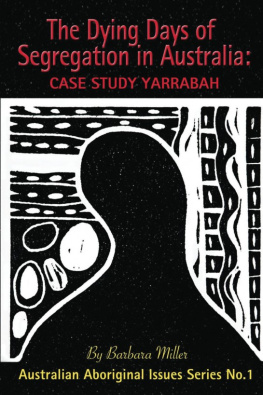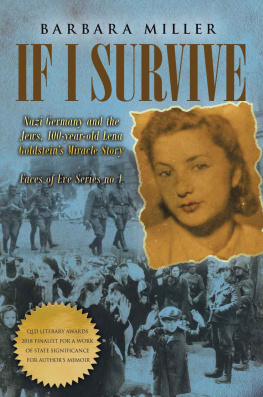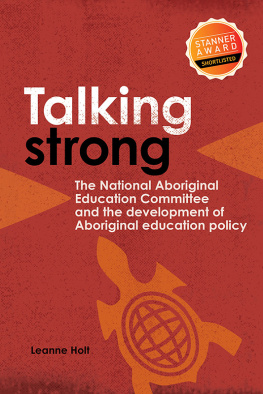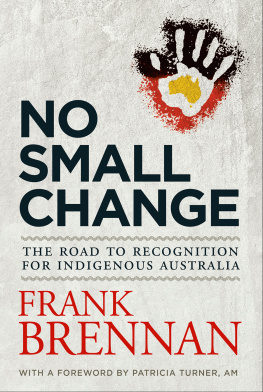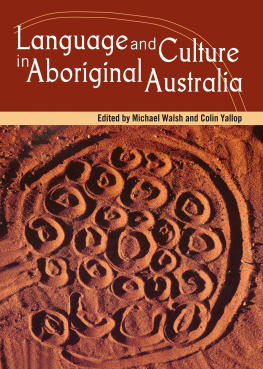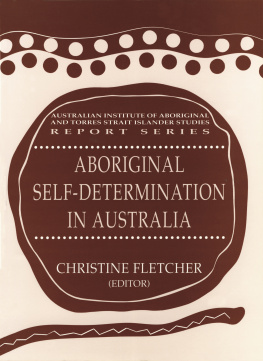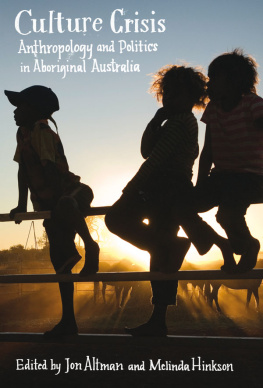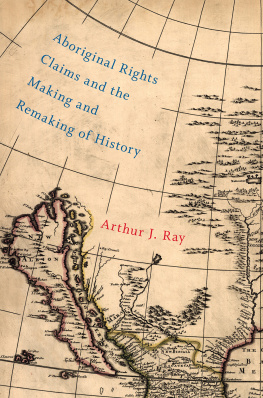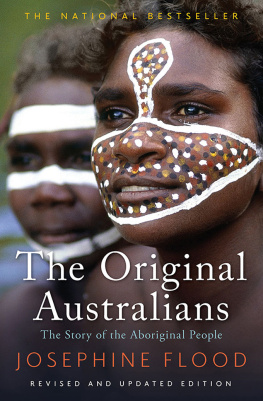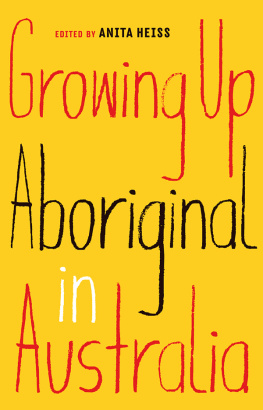THE DYING DAYSOF SEGREGATION IN AUSTRALIA:
CASE STUDYYARRABAH
By Barbara Miller2016
Copyright 2016 byBarbara Miller
B.A. (Hons) Psych,Grad Dip Sociology, MAPS, FDRP
The author may becontacted at www.barbara-miller-books.com
ISBN 978-0-9953691-0-8 eBook Kindle
ISBN 978-1-5375592-0-9 Paperback
ISBN 978-0-9953691-2-2 eBook Smashwords
SmashwordsEdition
Smashwords Edition, LicenseNotes
This ebook is licensed foryour personal enjoyment only. This ebook may not be re-sold orgiven away to other people. If you would like to share this bookwith another person, please purchase an additional copy for eachrecipient. If youre reading this book and did not purchase it, orit was not purchased for your use only, then please return toSmashwords.com and purchase your own copy. Thank you for respectingthe hard work of this author.
Thishas been updated from a work o riginally published as The aspirations of Aborigines living at Yarrabah in relation to local management and human rights March 1986 forthe Human Rights Commission as Discussion Paper No 7. The HumanRights Commission ceased to operate in mid-1986 and was replaced bythe Human Rights and Equal OpportunitiesCommission.
Cover design by DavidJack.
Frontcover painting: Dreams andVisions by Munganbana NormanMiller.
Backcover map courtesy of Yarrabah Aboriginal Shire Council http://www.indiginet.com.au/yarrabah
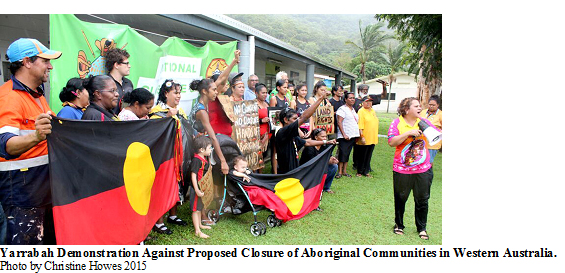
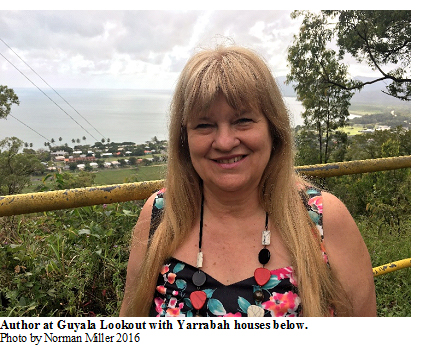
About theAuthor
Barbara Joyce Miller,historian, researcher and sociologist ,co-founded, with her husband Norman, the Centre for InternationalReconciliation and Peace in 1996. She has been recognized byWorldwide Whos Who for showing dedication, leadership andexcellence in humanitarian affairs. She lives in Cairns, Australia,with her husband Norman and son Michael.
Barbara is very passionateabout Aboriginal advancement and liaises with religious and othercommunities worldwide through the Centre for InternationalReconciliation and Peace, which provides services focused onhealing the wounds of history and reconciliation between peoplegroups. With her husband, Norman, she pastors the Tabernacle ofDavid congregation and she leads groups of Australians to Israelfor Christian conferences and prayer tours. Barbara has forty years of professional experience not onlyin Aboriginal affairs, but also as a psychologist and mediator. Shehas her own businessMediation Works Qldand is an expert inmediating workplace and large-scale community disputes andfamily-law matters. Barbara is a motivated, inspiring teacher andcounsellor who holds a postgraduate degree in sociology and aBachelor of Arts with honours in psychology.
As a social justicecampaigner, she helped the Mapoon people move back to their land.In the 90s, Barbara served as the CEO of the AboriginalCoordinating Council through which she lobbied state and federalgovernments and wrote reports on topics such as native title,Indigenous resource management, local government, human rights,crime prevention in Aboriginal communities, health and deaths incustody. She has also authored various books and articles,including a book titled William Cooper, Gentle Warrior: Standing Up for AustralianAborigines and Persecuted Jews , 2012and The European Quest toFind Terra Australis Incognita: Quiros, Torres andJanszoon , 2014.
Acknowledgements
I would like toacknowledge my faith in the God of Abraham, Isaac and Jacob and HisMessiah. It is my Christian faith that has given me a strong socialjustice focus. I wrote this originally in 1984 when my son MichaelMiller was five years old and I wrote itwith the encouragement and support of my then husband, Mick Miller,who was Chairman of the North Queensland Land Council, anorganization we established together. Micks father, Mick MillerSnr, was sent to the penal colony of Palm Island off Townsville forpunishment for speaking up for his rights. Micks mothers father,George Sibley, was also sent to Palm Island for punishment, withhis family, for being cheeky, i.e. standing up for his rights. SoMick was born on Palm Island to Mick and Cissie Miller who met andmarried on Palm Island. I would like to honour their legacy. Iwould also like to thank the Aboriginal people of Yarrabah andCairns for their contribution to this book and pioneeringcontribution to Aboriginal affairs.
In printing an updatedsecond edition with a fresh title and cover, I want to thank mywonderful husband of twenty-five years, Norman Miller, for hisbelief in me and support. Normans grandfather, Thomas Miller, waspart of the stolen generation, taken from his mother at Nyleta whenhe was five years old. Normans parents, Barclay and Shirley Millerhave been a wonderful influence in my life. Barclay was part of thegeneration of Aboriginal people who were not allowed to be educatedpast Grade 4 so he was self-educated. Once he applied for a permitto go to Weipa South Aboriginal reserve (now Napranum) with hisfederal government job and was refused because they thought it wasme. We had the same nameB. Miller.
I would also like to thankPhilip Newey for a wonderful job turningthis into an eBook and assistance with the printing process. Thanksto David Jack for another amazing book cover and Munganbanaseye-catching painting on the front cover.
Thanks also to the presentYarrabah Aboriginal Shire Council led by Mayor Ross Andrews andDeputy Mayor Michael Sands for approval of the book and hosting thelaunch at Yarrabah on DOGIT Day 31 October 2016. DOGIT Day will be especially significant in 2016 asit is the thirtieth anniversary of the day Yarrabah received itsdeed of grant in trust (first land grant). It was delivered inperson, said Mr Sands, by Queensland Minister for AboriginalAffairs, Bob Katter, who arrived in a helicopter with lollies forthe children.
Story ofCover Painting Dreams andVisions
By Munganbana Norman Miller
Limited Edition Lino Print
150 x 150mm
This black and white print showsme thinking, dreaming, imagining, looking at the possibilitiesbefore me. I am musing, creating what might be. It is as if thecircles are bubbles of thought and above them to the top left thereare rivers of possibilities, stepping stones to the fulfilment ofmy dreams. On the right are vine leaves I can climb up into thefuture, the rainforest holding its treasures for me to find.
Endorsements
I have known BarbaraMiller since the early 1990s when she was the Chief ExecutiveOfficer for Aboriginal Coordinating Council that was the peak bodyestablished by the Queensland Government to represent fourteen Aboriginal local government councils inQueensland.
Barbara has always had a keenunrelenting interest in social justice and community development ofAboriginal people stemming back from the 1970s and when I met herin the 1990s her dedication to the advancement of IndigenousAffairs has never ceased to amaze me.
Barbara has published fourbooks and written several journal articles and I respect theexcellent qualities of her work. This book is of significanthistorical value not only for Yarrabah but Aboriginal people acrossthe country can relate to it through their own stories. I stronglyrecommend this book The DyingDays of Segregation in Australia: Case StudyYarrabah . I can testify that I have livedin this era, when segregation was in its dying days.
Reflecting on my ownexperience of segregation in Broome as a boy in the 1960s, I recallwaiting with the patients of the Native Hospital for the doctorto finish attending to his white patients first.
Next page
